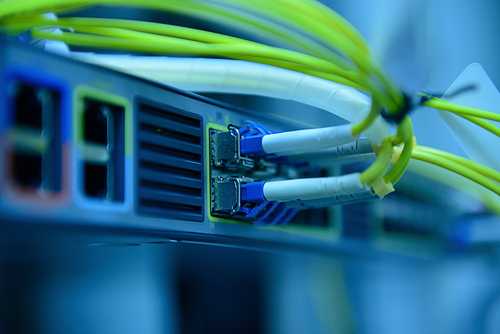With E-rate reformed, educators must consider new learning-centered questions
 E-rate, officially known as the Schools and Libraries Program of the Universal Service Fund, was created to provide schools and libraries with an affordable way to obtain telecommunications, internet access and internet-related services.
E-rate, officially known as the Schools and Libraries Program of the Universal Service Fund, was created to provide schools and libraries with an affordable way to obtain telecommunications, internet access and internet-related services.
In the beginning, E-rate focused principally on telephone service, which was the most basic and universal way individuals communicated 20 years ago. While the focus on communication has remained, technology has changed radically throughout the past two decades. During this period, E-rate adapted by broadening the range of eligible services to include mobile phones, pagers, voicemail, email, school websites and basic collaboration tools.
As the program evolved, the definition of “new technology” grew increasingly inexact and complicated. It became clear that E-rate was in need of a refresh. Advocates for change, including legislators, the Federal Communications Commission and organizations such as ISTE and the Consortium for School Networking (CoSN), hoped to address the question: How do we increase internet bandwidth available to our schools and provide ubiquitous wireless coverage?
Next page: Practical questions to ask
To answer this question, we needed to both increase E-rate funding and stretch every dollar. In an effort to make dollars go further, three main objectives were identified:
- Focus solely on digital transmission services and internet access.
- Eliminate services, such as paging, voicemail, email, text messaging and web hosting.
- Simplify the application process by only accepting electronic submissions.
Simply put, E-rate is now all about bandwidth.
After enacting these changes for the 2015-16 school year, the next move was to petition Congress for additional funding. Mission accomplished: The FCC approved a $1.5 billion E-rate increase, bringing the annual funding cap to $3.9 billion.
The new focus on connectivity is great, but now we must ask ourselves another question: “How will this connectivity improve learning outcomes?” In other words, what are we going to do with this bandwidth? The situation might be likened to a public utilities initiative to build huge infrastructure to get water into homes while neglecting the pertinent question of where we will get the water?
Our water is digital content, learning management systems, homework submission tools, live-stream video, all products and solutions that can impact learning. From a broader perspective, additional questions should be asked:
- What products and services support learning outcomes?
- What cloud-based services allow teachers and students to be more effective?
- How are we training teachers to deliver those outcomes?
When the lone goal of E-rate centers on bandwidth, practical questions like these don’t get answered. Bandwidth alone will not help create anytime, anywhere learners using technology geared to a student’s unique interests and abilities.
We should be excited about the modernization of E-rate. But when E-rate is all about bandwidth, practical questions about the products and services that will use that very same bandwidth don’t get answered.
Bandwidth on its own is not enough. We have to find meaningful ways to use that bandwidth to impact learning and to create anytime, anywhere learners.
Jeff Patterson is the founder and CEO of Gaggle.
- TC- What student choice and agency actually looks like - November 15, 2016
- What student choice and agency actually looks like - November 14, 2016
- App of the Week: Science sensor meets your smartphone - November 14, 2016


Comments are closed.